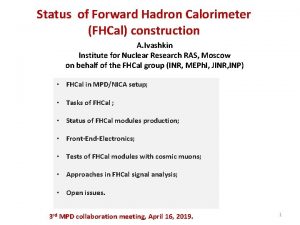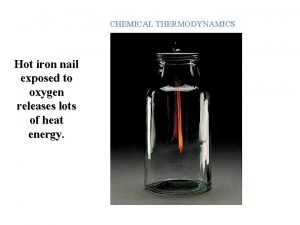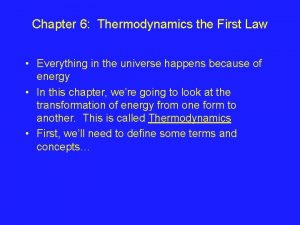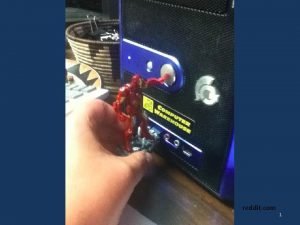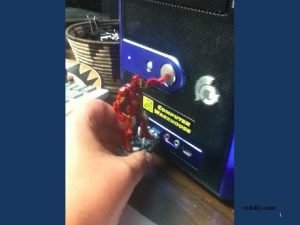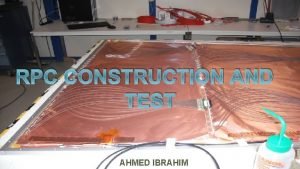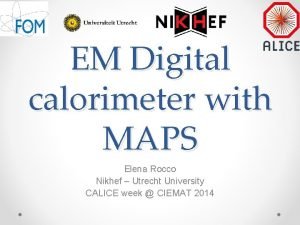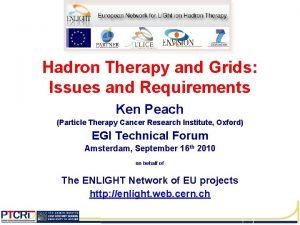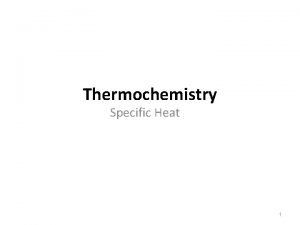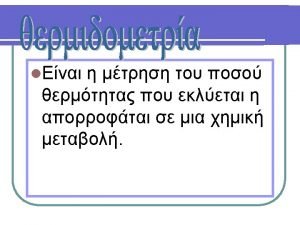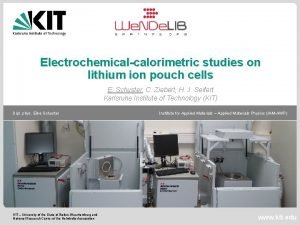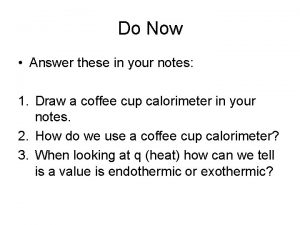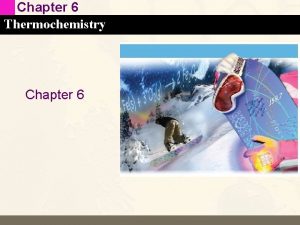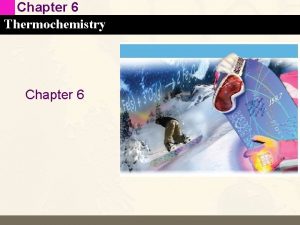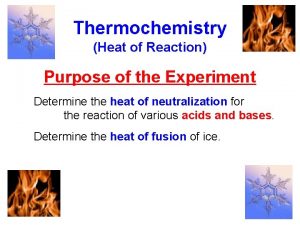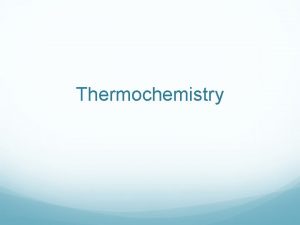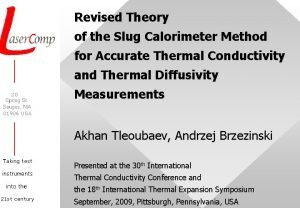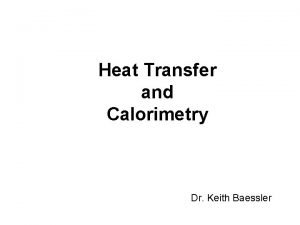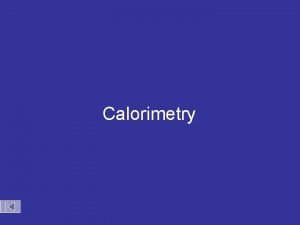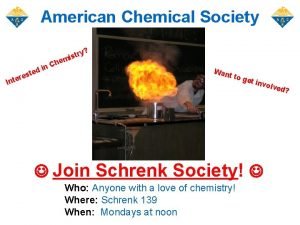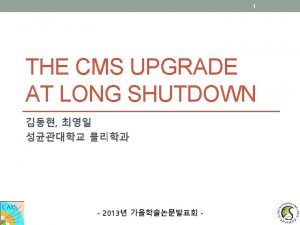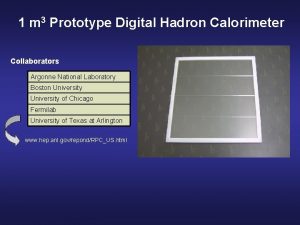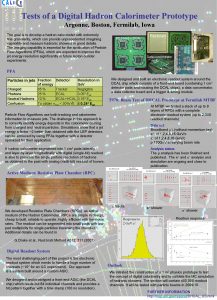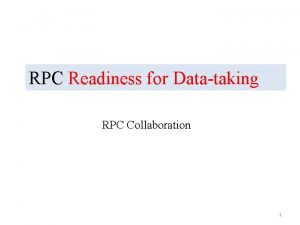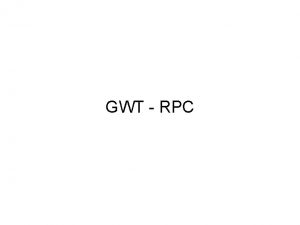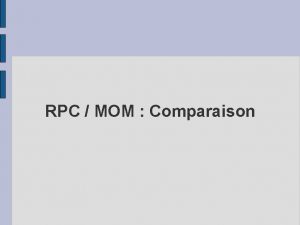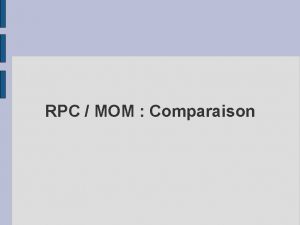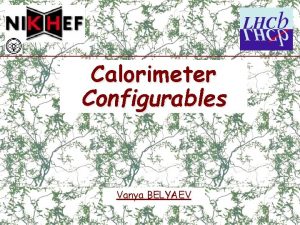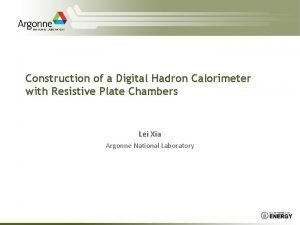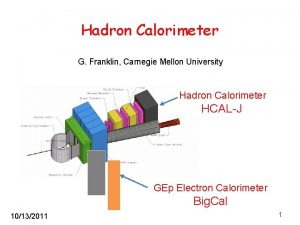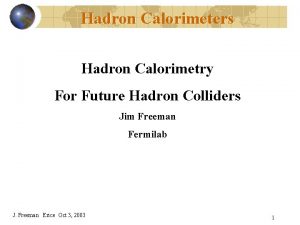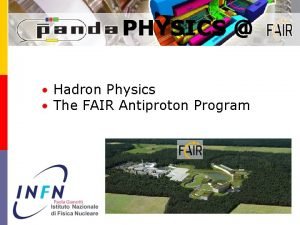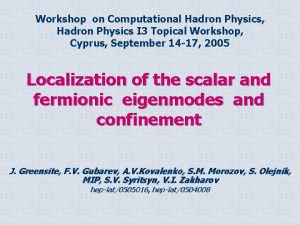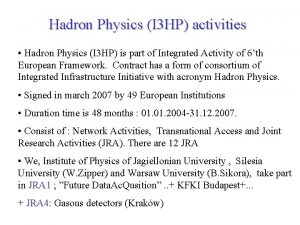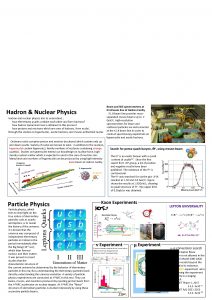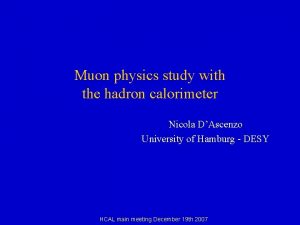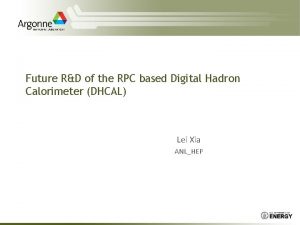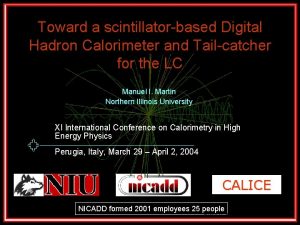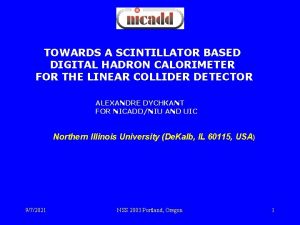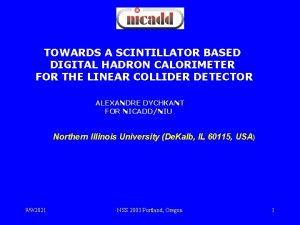Construction the RPC Digital Hadron Calorimeter Physics Prototype
























- Slides: 24

Construction the RPC Digital Hadron Calorimeter Physics Prototype Lei Xia Argonne National Laboratory CALICE collaboration meeting at UTA

RPC DHCAL Collaboration Argonne Boston University Mc. Gill University Carol Adams Mike Anthony Tim Cundiff Eddie Davis Pat De Lurgio Gary Drake Kurt Francis Robert Furst Vic Guarino Bill Haberichter Andrew Kreps Zeljko Matijas José Repond Jim Schlereth Frank Skrzecz (Jacob Smith) (Daniel Trojand) Dave Underwood Ken Wood Lei Xia Allen Zhao John Butler Eric Hazen Shouxiang Wu François Corriveau Daniel Trojand UTA Fermilab Alan Baumbaugh Lou Dal Monte Jim Hoff Scott Holm Ray Yarema Jacob Smith Jaehoon Yu IHEP Beijing Qingmin Zhang University of Iowa Burak Bilki Edwin Norbeck David Northacker Yasar Onel RED = Electronics Contributions GREEN = Mechanical Contributions BLUE = Students BLACK = Physicist

1 m 3 – Digital Hadron Calorimeter Physics Prototype Description Readout of 1 x 1 cm 2 pads with one threshold (1 -bit) Digital Calorimeter 40 layers each ~ 1 x 1 m 2 Each layer with 3 RPCs, each 32 x 96 cm 2 ~400, 000 readout channels Layers to be inserted into the existing CALICE Analog HCAL structure Purpose Validate DHCAL concept Gain experience running large RPC system Measure hadronic showers in great detail Validate hadronic shower models Status Started construction in 2008 - 09

RPC Construction RPC design 2 – glass RPCs 1 – glass RPCs (developed at Argonne) Gas gap size 1. 1 mm Total RPC thickness < 3. 4 mm Dead area ~5% (frame, spacer) Pad board Glass Chambers needed ~120 + spares Material Glass in hand for 300 chambers Kilometers worth of PVC frame extruded Assembly steps Spraying of glass plates with resistive paint Cutting of frame pieces Gluing frame Gluing 1 st glass plate onto frame Put in fishing line Gluing 2 nd glass plate onto frame Mounting of HV connection, etc. Frame Pad board Frame Glass

Spraying of the glass sheets Challenge Produce a uniform layer with R□ = 1 – 5 MΩ (value only critical for thin plate, thick plate can be lower) New paint (artist paint) identified Reasonably cheap Non toxic 2 component mixture (BLACK and GREEN) Needs to be sprayed Production Been struggling with spraying for a while Poor uniformity in a single plate Mean value not well controlled from plate to plate Low yield: ~ 60% passes quality cut Slow: barely match RPC assembly speed Measurements with 20 x 20 cm 2 chambers

Spraying setup

Improving paint spraying • (almost) Exhaustively studied all spraying conditions – Environmental temperature, humidity – Air brush pressure, flow rate, nozzle cleanliness – Paint ratio and quality – Horizontal slide speed • Improvement 1: pneumatic slide motor driven – Significantly improved uniformity • Improvement 2: air brush spray gun – Further improved uniformity – We believe that we are in control of the mean value now – Much faster spraying process • We are close to claim: problem solved Air brush Spray gun

RPC Assembly Cutting frames Dedicated (adjustable) cutting fixture Cut length to. 2 mm precision Drill holes Assembly Dedicated gluing fixture Frame/gap glued to ~0. 1 mm precision Very time consuming process: ~1 RPC/day/tech, 3 RPC produced/day Production 30+ final RPC completed or near complete Full speed production started

• Quality assurance Pressure test – – • Test at 0. 3 inch of water pressure Pass if pressure drop < 0. 02 inch in 30 sec Chambers not passing in 1 st test are repaired All repaired chambers pass 2 nd test so far Gap size measurement – Gap sizes of all chambers are measured along the edges – Gap sizes along all edges are controlled at ~0. 1 mm level (central region assured by spacers) – Corner regions are worse (but within 1 -2 cm from corner) • • • Typical ~0. 1 mm thicker A few corners are ~0. 3 – 0. 4 mm thicker Currently related to the way corners are glued In the process of improving the procedure HV test – Chambers are tested with HV before put readout board on • Chamber rejection: only 4 so far – 2: wrong glass sheet – 1: tubing arranged in wrong direction (typical learning process) – 1: gas inlet/outlet in wrong place, glass cracked

Test of production RPC with new (full size) board Setup Uses up to 7(4) small chambers from VST Currently 5(4) large chamber with 7(5) board Will increase to ~10 large chambers Will be used for RPC/FE board check out Data taking First events on 9/11/2009 Just finished prototype FE board tests Large cosmic/noise/Qinj data set

Some electronic test results • “Spark Tests” – One RPC has a ‘feature’ of sparking at a known voltage – Initially will send nearby FE boards to a funky state – Shielded data cable and improved grounding solved the problem • Tested noise floor of new FE boards – Noise performance (significantly) better than VST boards • Eliminated ALL data errors in system – NO data error ever observed in cosmic ray data – Eliminated a trivial DCOL firmware bug that creates check sum errors – Found 1 error mode in the last few weeks when push the system off the design limit (high rate) – Eliminated this error mode last week (firmware improvement) – Currently system run smoothly in ALL conditions (low threshold, high rate, sparks(? !))

Some cosmic ray events: single track Cosmic ray data analysis in progress

Some cosmic ray events: multiple tracks Cosmic ray data analysis in progress

Some cosmic ray events: air shower? Cosmic ray data analysis in progress

Cosmic ray test stand • Current issue – Uses scintillator trigger, only map out part of an RPC at a time – Low trigger rate (~10/min) – Takes forever to map out entire RPC • Planned changes – Remove VST and trigger counters – Expand to ~10 large RPC’s – Run in self-trigger (triggerless) mode • Challenges – New event builder: rely entirely on timing information of hit packages (no help from trigger packages) • Find cosmic ray tracks out of RPC noise hits • Tried with VST, should not be a major challenge – Data size: ~10 GB/day • Need timely data processing, data storage • Throw away raw data, only keep built cosmic ray events? – Soft tracks? • Cassette test stand – All finished cassettes will be put into a hanging structure for continuous test – Expect to run in self-trigger mode, utilize same event building/analysis – Qinj runs from time to test readout system

Cassettes Purpose Protect RPCs, cool front-end ASICs, compress RPCs/FE boards Design 2 x 2 mm copper sheets + cooling tube on top Will fit into CALICE Analog HCAL structure Uses nylon strings to compress the two copper sheets Prototypes First one built with all final dimensions Tested out with 3 RPCs and 6 FE boards Assembled again with 3 RPCs and 6 mock-up boards Tested in the CALICE Analog HCAL absorber structure Assembly Not expected to be labor-intensive

• Cassette design: press two plates together It is important to keep positive pressure on the two metal plates of the cassette – Ensure good thermal contact with ASIC’s – Ensure good contact between RPC and pad board • Solution: use pre-tensioned nylon string – String go between the RPC’s • Tested several string candidates – Pre-tensioned to ~4 – 5 pounds – No significant drop over ~ 30 days

Prototype cassette tested in CALICE stack Cassette fits perfectly into CALICE absorber stack No damage during ANL Fermilab ANL transportation

Front. End/DCON board + Pad board ASIC Front-End PCB Communication Link Conductive Epoxy Glue Pad Board Signal pads Mylar Resistive paint 1. 1 mm glass 1. 2 mm gas gap Fishing line spacers Resistive paint Mylar 8. 6 mm HV 1. 1 mm glass Aluminum foil § Build FE and pad boards separately to avoid blind and buried vias (cost and feasibility issue) § Glue the two boards together with conductive epoxy § Tried out in VST: all glued by hand (~10 boards) § Failing rate < 1% § Extrapolation to 1 m 3 not trivial § VST: 256 glue dots/board 1 m 3: 1536 glue dots/board

Gluing fixture for Pad- and FE-boards Initial Goal: 1536 glue dots in less than 3 hours Fixture Designed, built and commissioned Practice Glued 8 full size boards successfully Production ~55 minutes/board can glue 6 - 8 boards/day

Peripherals Gas Mixing rack – done Distributing rack – almost done Recently decided not to expand old rack Parts for a new rack (partially) arrived New rack assembly in progress Low Voltage 7 Wiener power supplies in hand 1 st distribution box built and in use being torture tested at full load (8 FE boards) High Voltage Units in hand Computer control programs commissioned 21

Summary RPC construction is progressing well Issues mostly resolved, production in full speed Quality assurance in place Cosmic ray test stand ready for RPC/electronic tests Still working on self-trigger running (event building/analysis) Cassette design proven, production start soon FE/pad boards gluing ready and tested HV, LV, gas systems are mostly ready

Physics prototype construction status Gary’s talk Jacob’s talk Task Status Comment RPC construction 30% done Much more tedious than anticipated Cassette construction Design complete 1 st prototype assembled Material on order Costly, but not very labor intensive Front-end electronics Prototypes fully debugged Boards in fabrication Pursued a very conservative approach Back-end electronics DCOL 100% done New TTM in fabrication Low voltage Power supplies in hand 1 st distribution box assembled and tested Parts for all units on order High voltage Units in hand Computer controlled program completed Gas system Gas mixer completed and tested Decision to built 2 nd distribution rack Parts on order DAQ software Implemented into CALICE framework 99% complete Event builder and display Event building started Event display complete Data analysis Started to reconstruct tracks in CR data Simulation RPC response simulated Implementation of DHCAL into MOKKA ongoing Lots of experience from VST

Physics prototype plans Task Dates Comments Construction Complete by June 30 th Should not slip much more… Cosmic ray testing of cubic meter April through August Installation into Mtest Early September 1 st data taking period September - October DHCAL standalone (with TCMT) 2 nd data taking period December Combined with ECAL 3 rd data taking period Early in 2011 DHCAL standalone or combined Disassembly and shipping of stage March 2011 Hard deadline
 Hadron calorimeter
Hadron calorimeter Coffee cup calorimeter vs bomb calorimeter
Coffee cup calorimeter vs bomb calorimeter Coffee cup calorimeter vs bomb calorimeter
Coffee cup calorimeter vs bomb calorimeter Capacity to do work is called
Capacity to do work is called Paper prototyping video
Paper prototyping video Design prototype test reddit
Design prototype test reddit Rpc construction
Rpc construction Digital calorimeter
Digital calorimeter Hadron collider
Hadron collider Hadron collider
Hadron collider Lhc tantalizing new physics
Lhc tantalizing new physics Hadron
Hadron Homemade calorimeter
Homemade calorimeter Constant volume calorimeter
Constant volume calorimeter Unit of bmr
Unit of bmr Accelerating rate calorimeter
Accelerating rate calorimeter Coffee cup calorimeter
Coffee cup calorimeter Dhrxn
Dhrxn Coffee cup calorimeter equation
Coffee cup calorimeter equation Heat of neutralization
Heat of neutralization Calorimeter
Calorimeter Slug calorimeter
Slug calorimeter Calorimeter
Calorimeter Calorimeter
Calorimeter Bomb calorimeter uses
Bomb calorimeter uses
